Antitank capabilities of the Soviet self-propelled artillery mount SU-85
In the initial period of the war, the Soviet Tanks new types had an advantage in security and firepower. However, the positive qualities of the KV and T-34 were largely depreciated by the unreliable motor-transmission part, poor sights and observation devices. Nevertheless, despite serious design and manufacturing defects, with proper preparation, our tankers often emerged victorious in battles with the German Pz.Kpfw.III, PzKpfw.IV and Pz.Kpfw.38 (t).
However, already in the first half of 1943, reports began to arrive from the front that spoke of the loss of the qualitative superiority of Soviet tanks over enemy armored vehicles. It was not even a matter of the heavy Tigers, which, due to their small numbers, did not have a decisive influence on the course of hostilities. Back in March 1942, the production of the medium tank Pz.KpfW.IV Ausf.F2, armed with a 75 mm gun 7,5 cm Kw.K.40 L / 43 and protected in frontal projection with 50 mm armor, began. An armor-piercing blunt-headed projectile Pzgr 39 weighing 6,8 kg, leaving the barrel at an initial speed of 750 m / s, at a distance of 1000 m normal could penetrate 78-mm armor.
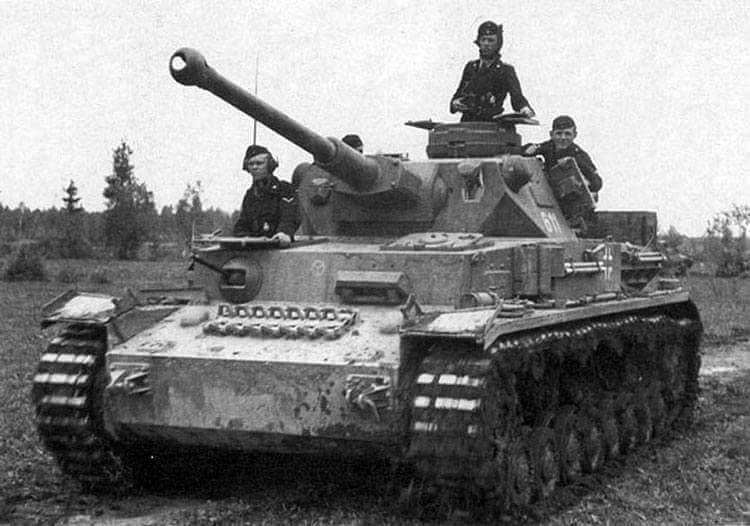
The medium tank Pz.KpfW.IV Ausf.G, which had 80 mm frontal armor, began to arm itself with the Kw.K.1943 L / 40 cannon in the spring of 48. The armor-piercing 75 mm shell of the Kw.K.40 L / 48 gun had an initial speed of 790 m / s and was capable of penetrating 1000 mm armor per 85 m. In addition to tanks, long-barreled 75-mm guns received StuG.III and StuG.IV. Soviet 76,2-mm guns F-32, F-34 and ZIS-5 mounted on the KV and T-34 tanks, when fired with an armor-piercing blunt-headed projectile BR-350B, could penetrate the frontal armor of the German "four", released in 1943, at a distance of 300 m
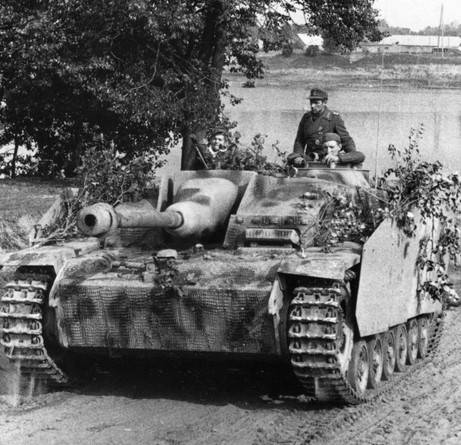
Thus, the modernized German medium tanks Pz.KpfW.IV and tank destroyers at their base by mid-1943 in terms of armor penetration of their guns had a significant superiority over Soviet tanks, and in terms of protection in the frontal projection they approached heavy tanks. In the second half of 1942, the Wehrmacht anti-tank units began to receive towed 75 mm guns of 7,5 cm Pak 40 in noticeable volumes, and 50 cm Pak guns in the 5 mm gun ammunition. 38 introduced the PzGr 40 sub-caliber projectile. Soviet heavy and medium tanks began to suffer heavy losses.
To compensate for the apparent qualitative superiority of the enemy in tanks, along with other measures, in August 1943, the SU-85 anti-tank self-propelled artillery installation was launched. Due to the urgent need for tank destroyers, this machine displaced SAU SU-122 at the production facilities of the Ural Heavy Machine Building Plant (UZTM) in Sverdlovsk. Having much in common with the SU-122 armed with the 122-mm M-30S howitzer, the SU-85 self-propelled gun carried a pronounced anti-tank orientation.
The crew of the self-propelled guns included 4 people. At the same time, the control department and the fighting compartment were combined. Based on the experience of the combat use of Soviet tanks and self-propelled guns when creating the SU-85, special attention was paid to ensuring the proper level of visibility and command controllability. To the right on the roof of the wheelhouse was a commander’s turret without an access hatch, which was used by the commander of the self-propelled guns to monitor the terrain and adjust the fire.
The self-propelled guns SU-85 were equipped with an 85-mm D-5S gun with 53-K anti-aircraft gun ballistics The length of the barrel of the D-5C gun was 48,8 caliber, direct-fire range reached 3,8 km. The maximum range of a fragmentation grenade is 12,7 km. The angles of vertical guidance from −5 ° to + 25 °, the sector of horizontal fire was ± 10 °. Combat rate of fire - 5-6 rds / min, maximum - up to 8 rds / min. The ammunition of 48 unitary shots, in addition to fragmentation shells, included armor-piercing caliber: 53-BR-365 (blunt-headed) and BR-365K (pointed-headed) weighing 9,2 kg, as well as a sub-caliber coil type 53-BR-365P weighing 5 kg. According to reference data, the 53-BR-365 armor-piercing projectile with an initial speed of 792 m / s at a distance of 1000 m could penetrate the 102-mm armor plate in the normal direction. The AP-53-BR-365P projectile with an initial speed of 1050 m / s at a distance of 500 m when hit at right angles pierced 140 mm thick armor. Submunitions, which were specially registered, were effective at relatively short distances, with an increase in the range of their armor penetration characteristics dropped sharply. Thus, the SU-85 was able to effectively deal with medium tanks of the enemy at distances of more than a kilometer, and at smaller distances to penetrate the frontal armor of heavy tanks.
In the process of mass production, the self-propelled gun was equipped with two non-interchangeable types of 85-mm guns: D-5S-85 and D-5S-85A. These options were distinguished by the barrel manufacturing method and the shutter design, as well as the mass of their swinging parts: 1230 kg for the D-5S-85 and 1370 kg for the D-5S-85A. Self-propelled guns armed with D-5S-85A guns received the designation SU-85A.
According to the characteristics of mobility and protection, the SU-85, which weighed 29,6 tons in combat position, remained at the SU-122 level. The maximum speed on the highway is 47 km / h. Cruising on the highway - 400 km. The thickness of the frontal armor, inclined at an angle of 50 °, was 45 mm. The thickness of the gun mask armor is 60 mm. Compared with the SU-122 self-propelled guns armed with a short-barreled howitzer, the long table of 85-mm guns required special attention from the driver of the SU-85 when driving in the city and in wooded areas. As with other anti-tank self-propelled guns with the front location of the fighting compartment, the SU-85 had a great risk of scooping up the ground with a barrel on a steep descent.
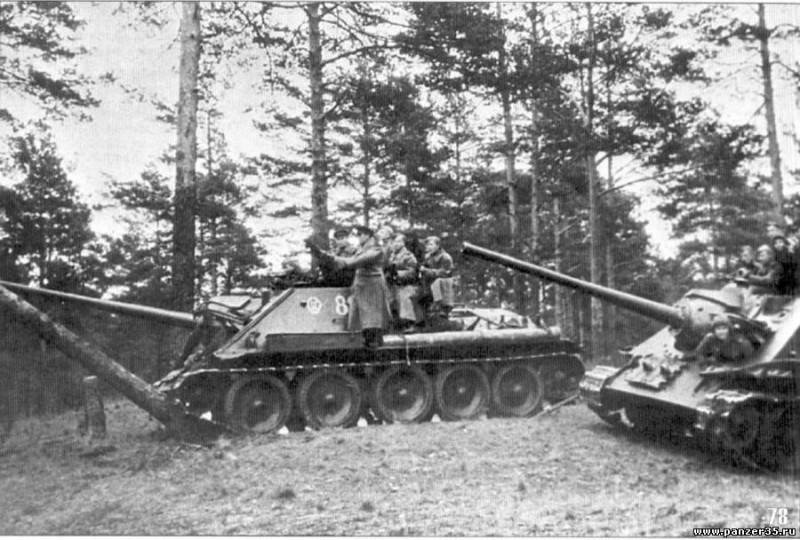
Since the SU-85 used components and assemblies well-developed on the T-34 and SAU-122 self-propelled guns, the reliability of the machine was quite satisfactory. Self-propelled guns of the first batch had a number of manufacturing defects, but after the mass began to assemble, there were no particular complaints about the workmanship. In 1944, the front rollers were reinforced and thus managed to eliminate the "sore" inherited from the SU-122.
SU-85 were sent to form medium self-propelled artillery regiments. According to the state of 1943, there were 4 batteries in the SAP, 4 SU-85 in each. The control platoon had 1 T-34 tank and 1 light armored car BA-64. In February 1944, all regiments were transferred to the new state. According to the new staff, the SAP consisted of 21 vehicles: 4 batteries of 5 installations and 1 vehicle of the regiment commander. Additionally, the regiment received a company of machine gunners and a platoon of sappers. SAPs were introduced into the tank, mechanized, cavalry corps and served as a fire reinforcement of the compound. Self-propelled guns were also used as part of the fighter anti-tank artillery brigades as a mobile reserve.
Self-propelled artillery SU-85 received a positive rating in the troops. They entered the battle in the fall of 1943 and showed themselves well in the battles for Left-Bank Ukraine. But in fairness it is worth saying that the tank destroyer SU-85 was at least six months late. The use of these machines in the Battle of Kursk could have a serious impact on the course of hostilities.
As for the anti-tank capabilities of the self-propelled gun, much depended on the skills and coordinated actions of the crew. The horizontal guidance sector of the gun was small, in the process of aiming the installation at the target, the driver mechanic was directly involved. The working conditions in the fighting compartment of the SU-85 were better than in the turret of the T-34-85, which was also armed with an 85-mm cannon. The presence of a more spacious cabin and convenient access to the combat station had a positive effect on the practical rate of fire and accuracy of firing. At the same time, self-propelled crews complained that prolonged firing at the maximum pace was difficult due to the excessive contamination of the fighting compartment.
By the standards of the second half of 1943, the 45-mm armor of the hull and the SU-85 felling did not provide adequate protection against 75-mm enemy tank guns. In a duel situation with the German Pz.KpfW.IV Ausf.G at a distance of up to 1500 m, opponents confidently pierced the frontal armor of the enemy’s corps. However, under equal conditions it was more difficult to get into a more squat self-propelled gun than into a tank. As for the confrontation with the Tigers and Panthers, in this case, the crew of the Soviet 85-mm self-propelled guns had a chance of success in operations from an ambush. In the course of real clashes with German heavy tanks, it was found that an 85-mm gun pierces the frontal armor of the Tiger tank from a distance of 600-800 m, and its side - from 1000-1200 m. Thus, the SU-85 self-propelled artillery was able to successfully deal with medium German tanks Pz.KpfW.IV of all modifications and self-propelled guns based on them. Destruction of the PzKpfw.V and Pz.Kpfw.VI tanks was also possible, but using the right tactics.
The level of losses in the SAP equipped with SU-85 directly depended on the tactical literacy of the command. Often given to rifle units to strengthen the anti-tank capabilities of self-propelled guns, infantry commanders used them as linear tanks, throwing them into head-on attacks on the well-fortified German defenses.
After in late autumn of 1944, self-propelled guns equipped with SU-85 suffered heavy losses, the Headquarters prepared orders that contained a ban on the use of self-propelled guns as tanks. In addition, it was forbidden to use self-propelled artillery regiments, which were part of the anti-tank brigades, to escort tanks and infantry in isolation from the rest of the brigade. These regiments were supposed to serve as anti-tank reserves in case of breakthrough of enemy tanks.
A typical example of the successful use of self-propelled guns as part of such a reserve was the actions of the 1021st self-propelled guns of the 14th anti-tank brigade during the Šiauliai offensive operation in July 1944 in the area of Devindoni settlement. By decision of the army commander, the regiment was focused on the tank direction behind the battle formations of the 747th anti-tank artillery regiment (57 mm ZIS-2 gun). A large group of German tanks of up to 100 vehicles, accompanied by motorized infantry in armored personnel carriers, launched a counterattack. After a stubborn battle, the enemy tanks broke through the battle formations of our advanced units. To prevent further advancement of the Germans, self-propelled guns SU-85 took up firing positions in ambushes along the path of enemy tanks. Having let the tanks down to a distance of 500 m, self-propelled guns, together with field artillery guns, fell upon them with sudden fire, destroyed and knocked out 19 vehicles, and the rest forced them to stop and return to their original position.
Along with positive feedback from the army, designers also received information about the need to improve self-propelled guns. So, the commander of the 7th mechanized corps, Colonel Katkov, evaluating the car, said:
It became obvious that for a confident fight with all enemy tanks at a distance of more than 1000 m, a new self-propelled gun was required, equipped with a more powerful gun, and having better protection in the frontal projection.
At the final stage of the war, German tanks were mainly used as a mobile anti-tank reserve, and the Soviet cutting edge was rarely attacked. In this regard, the SU-85 began to be used to provide direct artillery support to advancing tanks and infantry. If the effect of 85-mm fragmentation projectile 53-O-365 with a mass of 9,54 kg was satisfactory in field engineering structures and enemy manpower, then its power was often not enough to destroy long-term firing points. The effect of the use of the SU-85 as part of the assault groups was noticeably lower than that of the SU-122 or heavy self-propelled guns. So, in October 1944, when the troops of the 3rd Belorussian Front broke through the defensive line of the Germans on the river. Narva, some assault groups, having only SU-85 in their composition, were unable to complete the tasks of destroying the pillboxes, since the high-explosive action of 85-mm shells was insufficient. This problem was solved as a result of increasing the output of heavy self-propelled guns with 122-152-mm guns, as well as after the arrival of the new SU-100 with a much more powerful high-explosive fragmentation projectile than the SU-85.
Self-propelled guns SU-85 was in serial production for exactly a year. During this period, military representatives took 2335 vehicles. Self-propelled guns of this type actively fought until the end of hostilities. In the next post-war decade, all SU-85 were decommissioned or converted into tractors. This was due to the fact that there were a large number of T-34-85 tanks and self-propelled guns SU-100.
The ending should ...
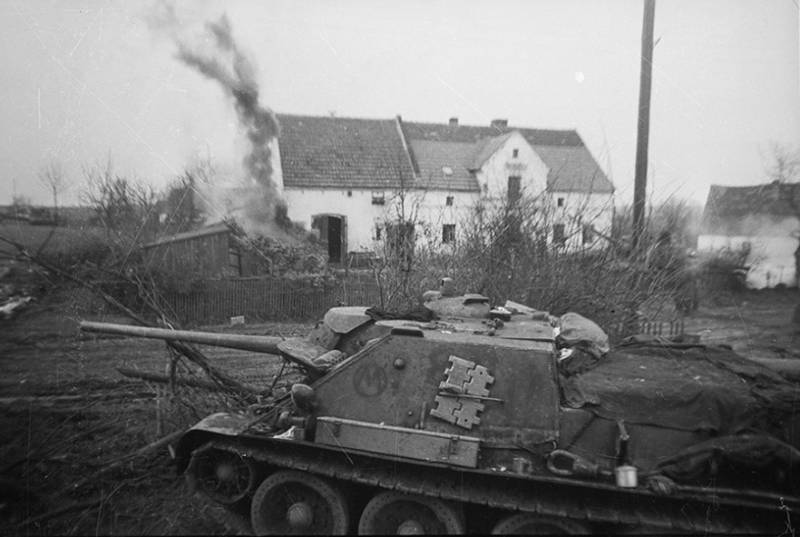
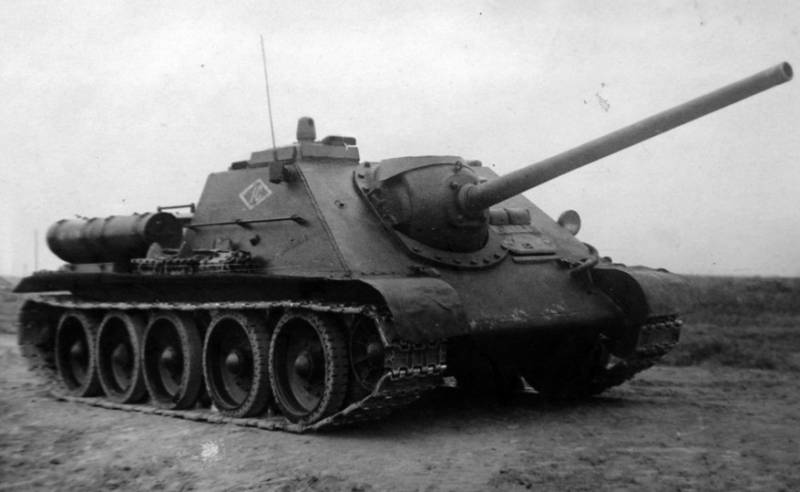
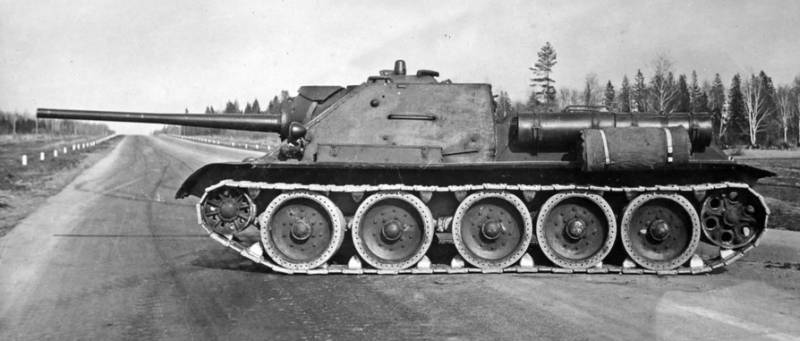
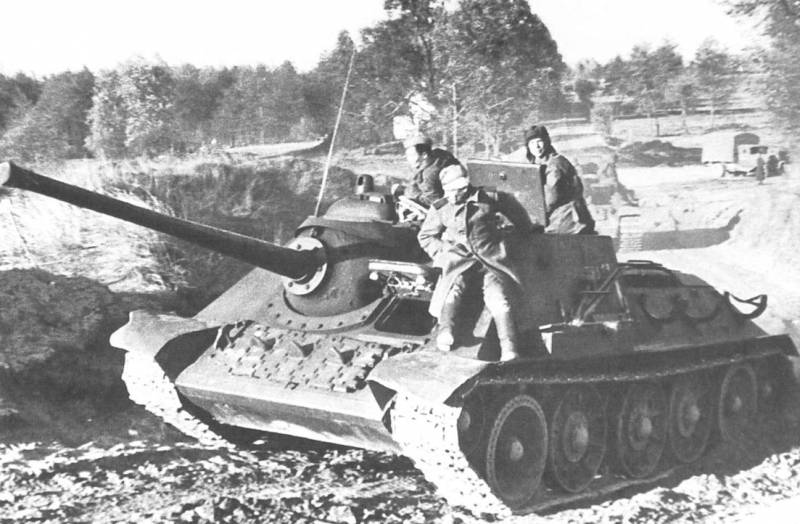
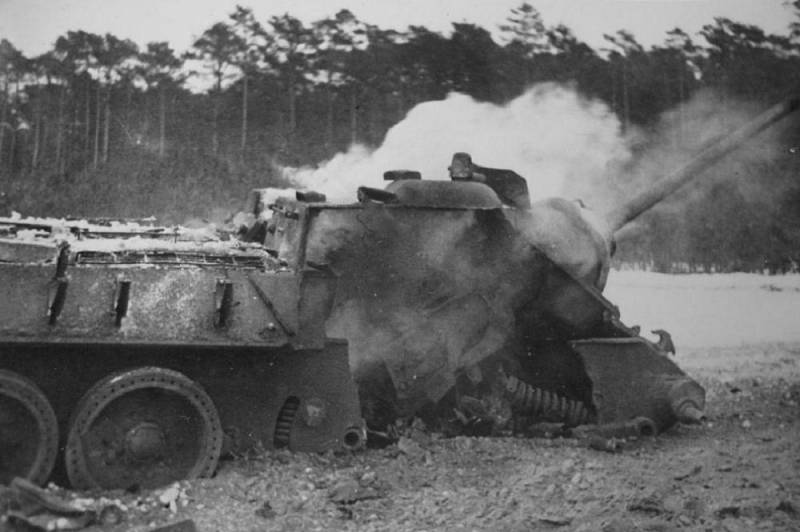
Information